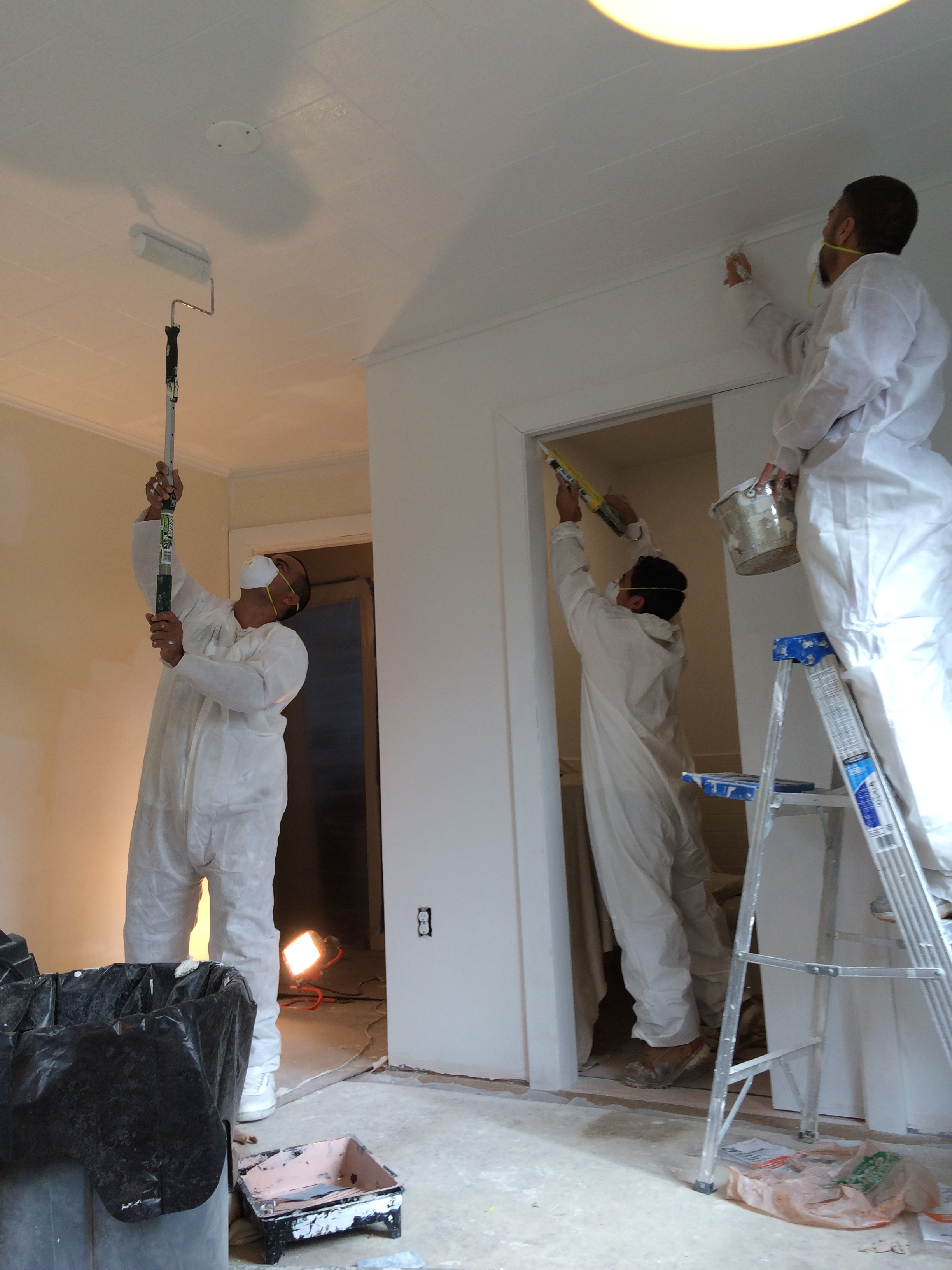Enhance Your Inside Design With Comprehensive Shade Consultation
The assimilation of shade appointment right into indoor layout offers an unique opportunity to refine and raise the emotional and aesthetic resonance of a room. By involving with an experienced shade consultant, you can browse the intricacies of color choice, ensuring that your options not just enhance building features yet likewise resonate with individual design and psychological influence.
Advantages of Color Appointment

In addition, color appointment aids in maximizing all-natural light and enhancing spatial perception. Lighter shades can make a room show up more large, while darker shades produce an intimate setting. Cleveland Metro Painting Specialists. This strategic application of color can considerably affect the overall setting of any indoor room
Additionally, professional specialists have a thorough understanding of classic classics and current patterns, ensuring that the chosen colors will stay appealing gradually. This foresight can conserve customers from costly redesigns in the future. Shade consultation equips clients by supplying them with a clear vision and instructions, fostering confidence in their style choices and ultimately leading to a much more effective and satisfying interior style end result.
Understanding Color Psychology
The relevance of shade psychology in indoor layout can not be overemphasized, as it explores the psychological and psychological impacts that various hues can stimulate in individuals. Shades can influence mood, actions, and even productivity, making them an important factor to consider in any type of design project.
For example, cozy shades such as red, orange, and yellow are usually connected with power and warmth. They can boost feelings of excitement and convenience, making them appropriate for social spaces like living rooms or cooking areas. Alternatively, cool shades like blue, eco-friendly, and purple tend to stimulate peace and tranquility, making them ideal for rooms or reflection areas.
In addition, the usage of neutral tones can create a well balanced environment by permitting the bolder shades to attract attention without frustrating the senses. Recognizing these emotional effects allows designers to produce areas that not only look visually pleasing however also promote emotional wellness.
Incorporating color psychology into interior layout involves a thoughtful selection of colors customized to the desired function of each space, ultimately improving the general experience for its passengers. This recognition is vital for attaining a functional and harmonious interior environment.
The Color Wheel Described
It makes up main colors-- red, blue, and yellow-- that can not be produced by mixing various other colors. Tertiary colors result from mixing a primary and an additional shade, leading to tones such as red-orange and turquoise.
The shade wheel assists designers realize the connections in between colors, consisting of complementary, comparable, and triadic schemes. Corresponding shades, positioned contrary each other on the wheel, produce vivid contrasts that can stimulate a room.
Utilizing the shade wheel in interior style not only improves aesthetic charm but likewise evokes specific feelings and atmospheres, making it a vital recommendation for shade examination. Comprehending these partnerships eventually empowers developers to create continue reading this rooms that are both aesthetically captivating and useful.
Picking the Right Palette
An appropriate color scheme can merge a space, enhance its functions, and stimulate preferred feelings. Various areas offer different features and call for combinations that show their desired usage; for circumstances, serene colors such as soft blues or eco-friendlies function well in bed rooms, advertising leisure.
Following, consider the all-natural light available. Light can considerably change just how shades appear, so it is vital to evaluate the room at different times of the day. In addition, take into consideration existing building aspects and furnishings. A harmonious palette needs to match these features, developing a natural look throughout the room.
When selecting colors, use the 60-30-10 regulation, which recommends that 60% of the area ought to be a dominant color, 30% an additional color, and 10% an accent shade. This proportion guarantees balance and visual passion (Cleveland Metro Painting Specialists). Example colors on the wall surfaces prior to committing, as this permits you to see how the colors connect with one another and the total ambiance they produce in your indoor design job.
Collaborating With a Color Consultant

When working with a shade professional, the process usually begins with an initial assessment. Throughout this conference, you'll discuss your vision, choices, and the existing components in your space. The specialist will assess your demands and may recommend particular color palettes that straighten with your objectives.
After developing a direction, the specialist will provide examples and aesthetic aids to help you envision the recommended color design. This step is important, as colors can appear in different ways under differing illumination conditions.
Additionally, a shade expert can assist you in selecting complementary furnishings, art work, and devices to harmonize with your chosen palette. By teaming up very closely, you can accomplish a refined visual that raises your interiors and creates an inviting atmosphere. Ultimately, the competence of a color consultant can dramatically improve the overall influence of your style project.
Verdict
In summary, extensive color consultation serves as a vital tool for enhancing indoor style. By leveraging professional knowledge of shade psychology and spatial dynamics, a tailored color scheme can be established to stimulate certain emotions and develop an useful site unified environment.
By involving with an experienced color professional, you can navigate the complexities of color option, making certain that your options not just complement building features however also resonate with personal style and mental influence. It makes up primary colors-- red, blue, and yellow-- that can not be developed by blending various other colors.The color wheel assists designers understand the connections between shades, consisting of corresponding, comparable, and triadic systems.When choosing colors, use the 60-30-10 guideline, which suggests that 60% of the space need to be a dominant color, 30% a secondary shade, and 10% an accent color. By leveraging specialist knowledge of shade psychology and spatial characteristics, a customized color combination can be developed to evoke specific feelings and develop a harmonious environment.